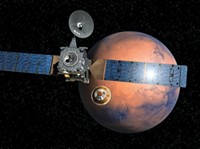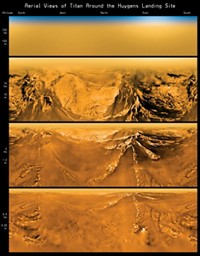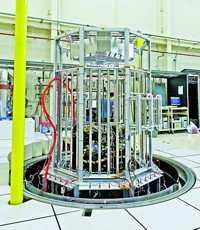Advertisement
Grab your lab coat. Let's get started
Welcome!
Welcome!
Create an account below to get 6 C&EN articles per month, receive newsletters and more - all free.
It seems this is your first time logging in online. Please enter the following information to continue.
As an ACS member you automatically get access to this site. All we need is few more details to create your reading experience.
Not you? Sign in with a different account.
Not you? Sign in with a different account.
ERROR 1
ERROR 1
ERROR 2
ERROR 2
ERROR 2
ERROR 2
ERROR 2
Password and Confirm password must match.
If you have an ACS member number, please enter it here so we can link this account to your membership. (optional)
ERROR 2
ACS values your privacy. By submitting your information, you are gaining access to C&EN and subscribing to our weekly newsletter. We use the information you provide to make your reading experience better, and we will never sell your data to third party members.
Physical Chemistry
A Farewell To Messenger
Space Science: Mercury-orbiting spacecraft nears death plunge after science-rich mission
by Elizabeth K. Wilson
April 17, 2015

With its fatal crash onto the surface of Mercury fast approaching, the spacecraft Messenger received a celebratory farewell this week from its controlling team, which toasted the craft’s numerous accomplishments during its four years orbiting our innermost planet.
At a briefing on April 16, principal investigator Sean C. Solomon detailed the Messenger mission’s “top 10 scientific findings,” including the discoveries that Mercury has been volcanically active, is chock full of volatile elements, and is curiously deficient in iron. Messenger also confirmed that water ice lies in permanently shadowed polar craters on the solar system’s smallest planet.
Messenger (which stands for MErcury Surface, Space ENvironment, GEochemistry & Ranging) is now out of fuel, and the diminutive, 10-foot-wide craft will hit the planet at 8,750 mph on April 30. The impact is expected to produce a 52-foot-diameter crater.
“After studying the planet intently for more than four years, Messenger’s final act will be to leave an indelible mark on Mercury,” mission systems engineer Daniel O’Shaughnessy said at the briefing.
Messenger, built and managed by Johns Hopkins University’s Applied Physics Laboratory for the National Aeronautics & Space Administration, is the first spacecraft to orbit Mercury.
The NASA spacecraft Mariner 10 flew by the planet in 1974 and 1975, giving scientists tantalizing glimpses of a blistering, barren world. But because of Mercury’s proximity to the sun, many technological advances were needed to design a craft that could be safely guided into orbit around the planet. Launched in 2004, Messenger took seven years to make its complex journey to Mercury and then settle into orbit.
Messenger started sending back intriguing data even before it began circling the planet. High-resolution images showed a surface pockmarked by past lava flows and eruptions. The craft found silicon, potassium, calcium, and sodium ions, and even water-derived ions, in Mercury’s tenuous atmosphere.
Once in orbit, Messenger quickly found craters casting permanent shadows at Mercury’s poles. The craters’ locations coincided with bright spots detected by Earth-based telescopes, strengthening the case that the spots are water ice.
Now, with only two weeks to live, Messenger is orbiting at extremely low altitude, allowing it to take images of individual craters.
And the crater the craft leaves after impact will be a unique feature for future missions to study, Solomon said. “Having an impact crater whose origin date is precisely known is an important bench mark” for studying planetary features, he said.
Scientists won’t have long to wait for a return to Mercury. The European space agency and Japan’s Aerospace Exploration Agency are planning a joint mission, BepiColumbo, that’s slated to launch two craft in 2017 and put them into orbit around Mercury in 2024.





Join the conversation
Contact the reporter
Submit a Letter to the Editor for publication
Engage with us on Twitter